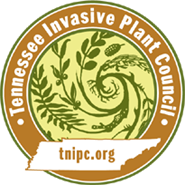Firmiana simplex (L.) W. Wight
Firmiana platanifolia (L. f.) Schott & Endl., Sterculia platanifolia L. f.), Chinese Parasol Tree, Phoenix Tree, Varnish Tree| Threat Level | Category |
|---|---|
| Emerging | Tree |
|
Similar Species May be confused with the following native and/or non-native species. Landscape Alternatives lists native horticultural substitutes |
Acer platanoides Platanus occidentalis Landscape Alternatives |
|---|

Description
Height
Chinese parasol tree forms an oval canopy ranging from 35-50 feet tall and spreading 20-30 feet wide.Leaves
Foliage is alternate, deciduous, and bright green, turning yellow in the fall. Simple leaves are up to 12 in. across with 3 to 5 lobes, palmate venation and long petioles.Twigs
Stems and twigs are bright green with large round leaf scars. Bud scale scars leave a raised ring encircling the twig.Bark
Green to grayish bark has pale green striping, is thin, and damages easily. Pronounced eye-shaped branch scars are visible on the trunk.Flowers
In late spring/early summer, the tree produces 10 to 20-inch, upright, branched, terminal panicles of tiny yellowish tan flowers that are mildly fragrant. Separate male and female flowers occur per cluster, opening at different times.Fruit
Pod-like capsules split open into 4 or 5 sections, star-like, when ripe in autumn. Each section contains 1 to 5 seeds.Images
Image: Karan A. Rawlins, University of Georgia, Bugwood.orgMore images of Firmiana simplex
Life History
Chinese parasol tree, native to Asia (China, Japan, Vietnam), was introduced in 1757 as an ornamental and is being planting in the southern portion of the U.S. It grows rapidly when young and readily self-pollinates and self-seeds. Seeds appear to be dispersed mainly by wind and water. Prolific seed production combined with aggressive growth warrant rapid treatment response in warmer regions of the U.S.Habitat
Winter hardy to USDA Zones 7-9, it is easily grown in average to medium moisture and well-drained soils in full sun to part shade, including roadsides, riparian areas, and forest margins. Established trees develop some drought resistance.Origin & Distribution
Native to Asia, it has now naturalized throughout the southeastern U.S, though most notable populations are in coastal states. Present: AL, AR, CA, FL, GA, LA, MD, MS, NC, SC, TN, TX, VAManagement Recommendations
Mechanical Control
Hand pulling, mowing, and string trimming are effective for seedlings and small saplings.Chemical Control
Hack-and-Squirt: For mature trees, this method is effective. Use a sharp hatchet to slash the extremely tough mature bark several times, followed by herbicide (glyphosate) sprayed directly into the wound with a squirt bottle.Cut Stump: Glyphosate applied to freshly cut stumps is particularly effect in fall when plants are shunting resources into their roots.
Basal Bark: Mix 25% triclopyr and 75% horticultural oil to spray in a collar around the trunk of the tree for effective control. Thorough wetting is necessary for good control; spray until run-off is noticeable at the ground line. This method can be applied throughout the year as long as the ground is not frozen.
Seedlings and smaller saplings may be treated with a 1.5% (2 oz/gal) Brushmaster® solution combined with a few drops of dish soap added as a surfactant and several ounces (per 4 gallons) of ordinary rubbing alchohol (isoproponal) as a penetrant.
Sources
Texas Invasives.org: Firmiana Simplex
USDA PLANTS Database: Firmiana simplex (L.) W. Wight.
Virginia Tech Department of Forest Resources and Environmental Conservation: Chinese parasoltree
